|
iSCADA:
Managing Public Utilities
[
New iHEPS Application ] Public utilities
service providers often own, manage and maintain very large
engineering infrastructure systems. It is the dream of public
utilities operators to be able to know immediately or have prompt
information on the status of each and every unit within their systems
so that they are able to deliver the finest service to their
customers.
The limiting factor to achieving this dream however, is the
astronomical cost involved in deploying an expert system such as a
conventional SCADA system. Budget constraints often result in the
monitoring of only the higher end, bigger and upstream subsystems,
leaving the smaller downstream subsystems unmonitored.
Power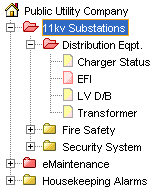
For power utility companies, the generation and transmission
facilities are typically managed by conventional SCADA systems.
Monitoring of the distribution network is often limited to the 33/11kV
intakes, while the 11kV substation network remained largely
unmonitored. Since the chain is as strong as its weakest link, the
unmonitored 11kV substations, as the final link to the consumers,
determine the strength and reliability of the entire distribution
system.
With the advent of Internet SCADA technologies, this weakest link can
be centrally monitored and managed in a very efficient and cost
effective manner. The iSCADA solution offers the benefits of a
conventional SCADA without the associated high cost of communication
infrastructure, software, MTUs and RTUs.
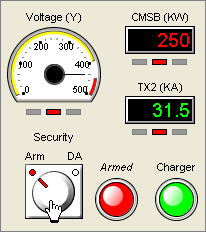 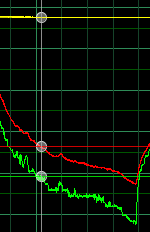 Condition
monitoring Condition
monitoring
iSCADA brings analogue readings like KW, KWH, PF, VArh Temperature,
etc to your desktop via the Internet.
Condition monitoring can enhance the availability of any distribution
network, while online remote sub - metering at substations can help to
detect and prevent electricity theft.

Telecommunications
While the telecommunications equipment housed within Radio Base
Stations or exchange buildings are centrally monitored by network
engineers at their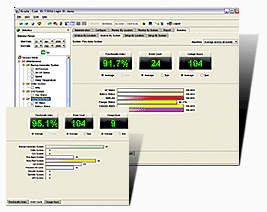 respective Network Operation Centers, it is critical that the
supporting mechanical and electrical infrastructure of the stations
(Security, Fire Protection, Air Conditioning, UPS and Backup Generator
Sets) are centrally monitored by a specialized team of maintenance
personnel.
respective Network Operation Centers, it is critical that the
supporting mechanical and electrical infrastructure of the stations
(Security, Fire Protection, Air Conditioning, UPS and Backup Generator
Sets) are centrally monitored by a specialized team of maintenance
personnel.
Although it is possible for the monitoring of M&E systems to ride
on the telco equipment monitoring infrastructure, it if often
desirable and more efficient for the infrastructure maintenance team
to utilize a separate monitoring system. This is because the network
engineers and maintenance team often operate under rather different
environments.
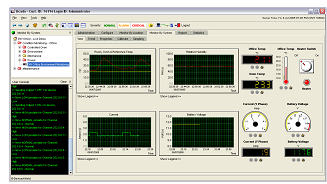 An Internet-based data acquisition like iSCADA
provides an ideal solution for such housekeeping tasks as the data is
not �locked� in the confines of a control room. It provides global
access to various levels of management, contractors, and site engineers.
An Internet-based data acquisition like iSCADA
provides an ideal solution for such housekeeping tasks as the data is
not �locked� in the confines of a control room. It provides global
access to various levels of management, contractors, and site engineers. |


